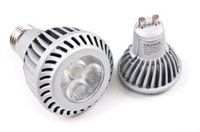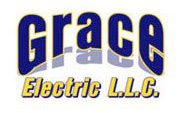
LED lamps (also known as LED light bulbs) are solid-state lamps that use light-emitting diodes (LEDs) as their source of light. LED’s have been found in consumer products since the 70’s with the advent of LED calculators, watches, and alarm clocks. However it is only recently that technology has provided not only clear white light LED’s but also lamps with enough intensity to light up a room, both at an affordable price.
Color:
Conventional light bulbs come in various colors such as soft white, daylight, or cool white lamps. Early LED designs did not all emit a very pleasing light familiar to most consumers. Thanks to the latest technology, LED lamps are now available in soft white or daylight to fit a variety of applications. Exterior accent lighting is often much softer or warmer in tone compared to kitchen or garage lighting which is sometimes brighter toward daylight color.
Intensity or Brightness:
LED’s are efficient and that is what led them into first being used in portable battery operated devices such as watches and pocket calculators. When the power is increased, LED’s can offer substantial light output and still remain very efficient. If one LED is not enough, manufacturers sometimes combine 4, or 8 individual LED’s into one housing to increase overall brightness.
Cost:
One by one, manufacturers have solved many of the downsides of LED lighting. However that still leaves cost, not just the cost of the unit itself but the “total cost of operation”. LED lamps are hands down much more expensive per unit than CF (Compact Fluorescent) or incandescent bulbs. However a conventional light bulb may only last 2000 hours compared to the 40,000 hour lifespan of most LED units. What is the cost of 20 conventional lightbulbs in a true comparison? Then there is the energy savings itself derived from the different power ratings of each bulb usually given as Watts. LED bulbs do save electricity and sometimes a lot of it. Manufacturers are quick to advertise their savings on the outside packaging of their products. Many tests do show that their claims are reasonably accurate.
When it is worth it to buy a LED bulb?
Lets take two applications. The first would be a closet lamp or maybe even a dining room light which is rarely used. Now compare this to a kitchen light, or even a bathroom light that is left on all night long. It would make more sense to upgrade a kitchen light or security light to LED simply because it is left on so much. In other words, given the same investment, it is better to save a percentage of a lot than the same percentage of a little.
Another good application for LED lights would be in a den with a tall ceiling where changing bulbs is very difficult or impractical. A homeowner might pay a lot to never have to change a bulb again for years and years in such a ceiling.
In summary, LED’s offer a lot of advantages but only in particular cases where their cost is truely justified by their true overall utility (cost of operation) as well as other possible “logistics” and other specific case-by-case benefits to the consumer.
